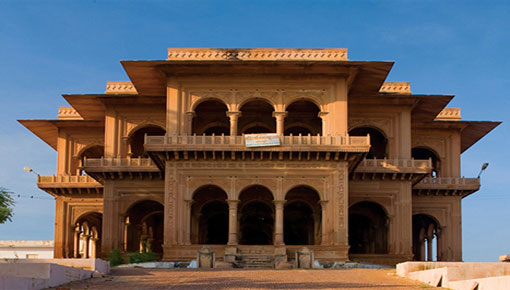Department of Tourism
Govt. of Rajasthan










Dating back to the epic age, the city of Bharatpur has a rich history. In the fifth century BC, Matsya kingdom flourished at this place. In the war of Mahabharata the Matsyas acted as the partners of the Pandavas. Legend also has it that Bharatpur was named so after Bharat, the brother of Lord Rama. Lord Rama's other brother Laxman was regarded as the family deity by the ruling family of Bharatpur. The state seals and coat-of-arms also have the name of Laxman on them.
Maharaja Suraj Mal founded the city of Bharatpur in 1733 AD. Once an unassailable and well-equipped city, it was carved out of the region previously known as Mewat. Suraj Mal seized the fort of Bharatpur from Khemkaran, the rival chief. Even in the time of political crisis, Suraj Mal made a name and position for himself and went from one accomplishment to another. A number of forts and palaces were built by him throughout the territory. Read on this Bharatpur city guide to know more about the city:
Bharatpur travel & tourism is most famous for its bird sanctuary. Keoladeo Ghana National Park houses some of the most exotic species of birds, along with a rich wildlife. Other attractions of the city of Bharatpur in Rajasthan, India include the Bharatpur palace and museum, a number of temples, Lohargarh fort, etc. Apart from these, there are a number of other places also to see around Bharatpur.

From being quite hot in summers to cold in winters, Bharatpur weather experiences quite variations. In the summer season, the average temperature escalates to a range as high as 38° C to 45° C, approximately. Monsoons bring some respite from these extreme climatic conditions of Bharatpur, Rajasthan. The average temperature falls down to about 27° C, with humidity hovering around 70% to 75%. Bharatpur experiences cold winter, where the average temperature drops to, as low as, even 10° C. Fog and mist is a normal feature of the climate of Bharatpur during the month of January.

Keoladeo National Park, better known as Bharatpur Bird Sanctuary, has the distinction of being a World Heritage Site. This small Park with an area of 29 square kilometers consists of extensive marshes and scrubland. It is considered the best waterfowl sanctuary in the world.
It is not that there is a lack of other suitable areas in the Park, but the nests are protected in this way. Even large reports resist raiding a nest because of the racket raised in unison by the alarmed birds.
During the monsoons thousands of egrets, herons, storks, cormorants, darters, spoonbills and ibises breed here, forming a congested heronry. Small acacia trees are tightly packed together with nests of several species
Migratory waterfowl start arriving in October. Soon the marshes are packed with colorful geese, ducks, cranes, pelicans and flamingos. But the limelight focused on the Siberian crane-one of the most threatened species in the world.
In India, Keoladeo is the only place where these cranes winter. Regrettably the number of Siberian cranes arriving here has been declining due to suspected hunting on their migratory route. Last year only 5 of them visited the Park, and at the time of writing in mid-November, none had visited Bharatpur.
Winter sees predatory birds-the fishing cat which specializes in scooping ducks off the lake. The scrubland abounds in sambar, spotted deer, black buck, blue bull, wild boar, jackal and jungle cat. Pythons bask in the sun around their several known burrows.
It would be remiss not to inform readers about the interesting background of the park. Bharatpur was a small princely state, with no forests worth the name. While many States boasted of grand hunting preserves, the then Maharaja of Bharatpur, in the late 19th century, created a wonderful water-bird sanctuary by converting the arid scrub land into marshes by a system of small dams and dykes. In time, this marshland became the duck shooting preserve of the erstwhile Bharatpur state. Today it is unmatched in India.

The Bharatpur Palace owes its formation to a number of Maharajas. This beautiful piece of architecture is a blend of the Mughal and Rajput styles. The palace houses a number of apartments, decorated with elaborately designed patterned floor tiles. The main central wing of the palace has now been converted into a museum. The museum exhibits rich collection of artifacts dating back to as far as the 2nd century. On display, is an array of antiquities, exquisite sculptures, ancient inscriptions, etc.

Ganga Mandir is an architectural wonder. Built by Maharaja Balwant Singh in 1845, this temple has a unique story attached to it. It is believed that all the people employed in the service of the state were asked to donate one month's salary or any increment in their salary for the temple. The temple was constructed out of this money only.

Laxman Mandir is dedicated to the younger brother of Lord Rama, Laxman. The doorways, ceilings, pillars, walls and arches of the temple are carved with intricate stonework.

The focal point behind the construction of the Lohagarh Fort was strength and defense. The fort withstood many attacks by the British. They fort is known not for beauty, rather, for the power and brilliance it exudes. It is unlike any other fort in the state of Rajasthan. Surrounding the fort is a moat, which acted as a form of defense against the enemy attacks. The fort has an Ashtadhatu (eight-metal) gate, adorned with huge elephant paintings. Other attractions of the fort include Kishori Mahal, Mahal Khas, Moti Mahal, Kothi Khas, Jawahar Burj, Fateh Burj, etc.